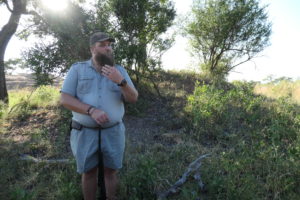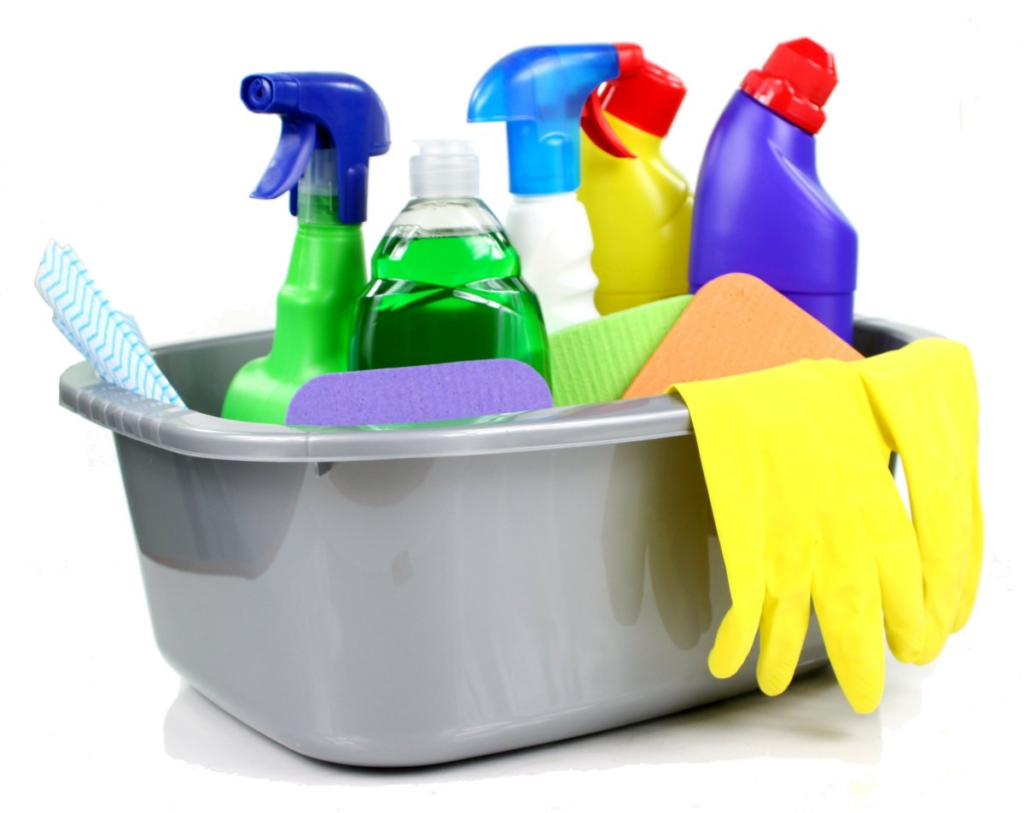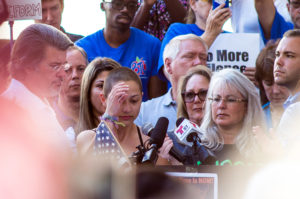Lions–and Safaris–Depend on This Surprising Bug
One of the most fascinating talks I’ve ever heard happened this morning on a guided bush walk in Kruger National Park, South Africa, delivered from atop a huge termite mound.

Termites are largely responsible for shaping and managing the ecosystem that allows the magnificent animals we see on safaris: the elephants, lions, giraffes, zebras, and more. They are master builders, creating mounds and underground caverns (two or three times as big as the visible parts of the mounds) that can stretch 50 meters into the earth.
Termites invented climate control millions of years ago. They move wet earth astonishing distances to plaster the walls, creating an ideal environment for the fungus their queen loves to eat, and they build chimneys—heat vents they can open and close—to maintain the ideal temperature for the queen’s comfort.
They are such sophisticated engineers that some plaster casts of abandoned mounds have required pumping in ten tons of plaster.
That queen starts tiny but eventually reaches a length of five inches or so, loses her legs, and turns her attention to hive management and reproduction. But not just any kind of reproduction! She picks the type of worker the colony needs at that moment and produces farmers, soldiers, attendants staff who attend to her needs as commanded by pheromones, flying termites (including scouts, wood scavengers, and future kings and queens who go off to start new colonies), and other types as needed.
These different types have biological differences, each equipped for their own mission. And she will lay about 40,000 eggs every day, but most of the young’uns will only live for a few days. Still, a large mound can have hundreds of thousands of inhabitants.
The queen outlives thousands of generations of her offspring. At the end of her 30- to 40-year life, she clones herself and produces one new queen, genetically identical, who will manage the same mound—so some of these mounds are centuries old, with a ruler identical to the mound’s female co-founder. Her partner is a king who fertilizes the queen, and paired couples fly off to start the new mounds—a complex process where both of them find a soft digging spot they can manage without the tools of the construction-worker termites and begin digging and egg-laying exactly three days before a significant rainfall.
The eggs take three days to gestate and require lots of moisture.
If a queen dies before cloning herself, the whole colony dies. Queens cannot be introduced from elsewhere, and the workers lose all interest in their tasks—or in living—without a queen.
And here’s why this is a problem: Not only do termites clear the dead wood around them by digesting it, the mounds and chambers provide enormous nutritional boost to the soil. Termites are what creates the richness that allows grasses, shrubs, and trees to flourish. Without all that, the herbivores like elephants, giraffes, rhinos, impalas, hippos, warthogs, etc. would have nothing to eat and would not exist. And without them, the apex predators including the big cats would not have their food.
So if you’ve gone on safari and seen these beautiful animals in the wild, you can thank the termites. And the best way to thank them is to recognize their role and not use pesticides against them. If you live in a termite-prone area, treat the wood of your house instead of fogging the air with poison that poisons you, your family, and the much-needed termites—and help your friends understand that when we treat nature as a teacher and ally, the results are far better than if we treat her as an enemy.
Other tidbits from this hike:
• Elephants will destroy one marula tree at a time to get the fruit—but their digestive enzymes activate the seeds, so when they poop them back out and natural forces spread them, a thousand marula trees could germinate from the single sacrificed one.
• Elephant tracks look kind of like snowshoe tracks. You can tell females form males because if it’s a female, you’ll also find tracks from the babies.
• Spear grass seed will actually drill itself into a growing medium by spinning in one direction. Even though they can’t survive there, they will even drill into human skin and you can’t get them out with tweezers. Nico’s mentor used to always carry a medical scalpel to excise them. Nico prefers to avoid them in the first place.


 When I wrote this article back in 2014, it was published in three places. But it’s long enough ago that I can’t find it online. The message is too important to let slip away, so I’m reprinting it here–unchanged except for adding one sentence.
When I wrote this article back in 2014, it was published in three places. But it’s long enough ago that I can’t find it online. The message is too important to let slip away, so I’m reprinting it here–unchanged except for adding one sentence.
